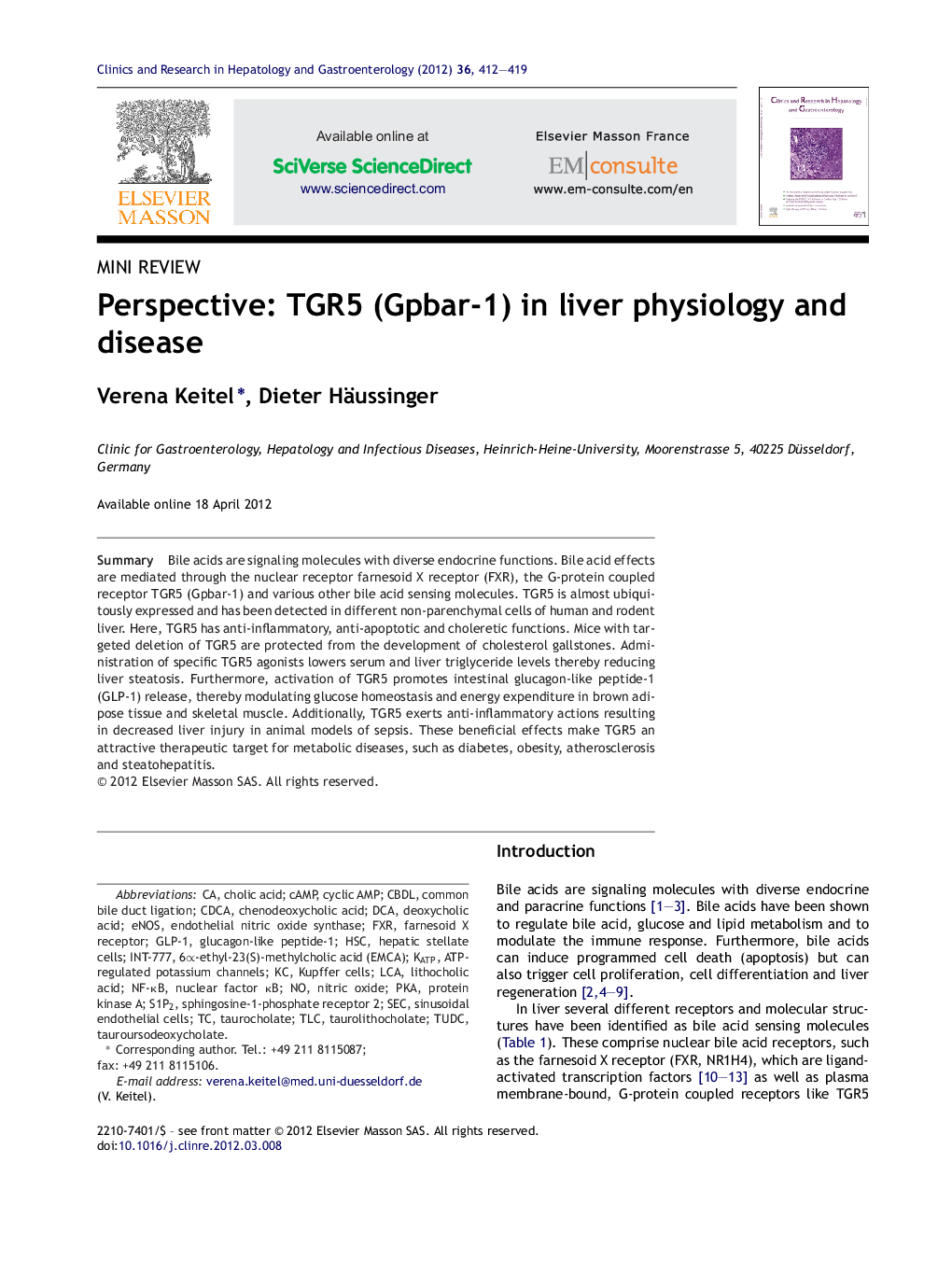| Article ID | Journal | Published Year | Pages | File Type |
|---|---|---|---|---|
| 3286668 | Clinics and Research in Hepatology and Gastroenterology | 2012 | 8 Pages |
SummaryBile acids are signaling molecules with diverse endocrine functions. Bile acid effects are mediated through the nuclear receptor farnesoid X receptor (FXR), the G-protein coupled receptor TGR5 (Gpbar-1) and various other bile acid sensing molecules. TGR5 is almost ubiquitously expressed and has been detected in different non-parenchymal cells of human and rodent liver. Here, TGR5 has anti-inflammatory, anti-apoptotic and choleretic functions. Mice with targeted deletion of TGR5 are protected from the development of cholesterol gallstones. Administration of specific TGR5 agonists lowers serum and liver triglyceride levels thereby reducing liver steatosis. Furthermore, activation of TGR5 promotes intestinal glucagon-like peptide-1 (GLP-1) release, thereby modulating glucose homeostasis and energy expenditure in brown adipose tissue and skeletal muscle. Additionally, TGR5 exerts anti-inflammatory actions resulting in decreased liver injury in animal models of sepsis. These beneficial effects make TGR5 an attractive therapeutic target for metabolic diseases, such as diabetes, obesity, atherosclerosis and steatohepatitis.
